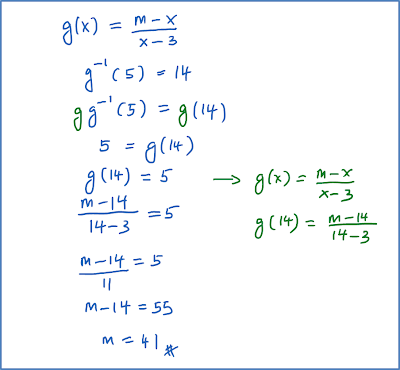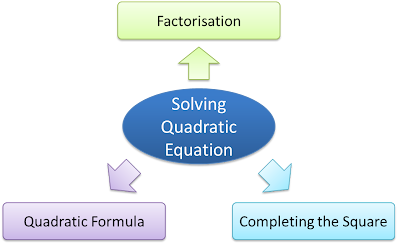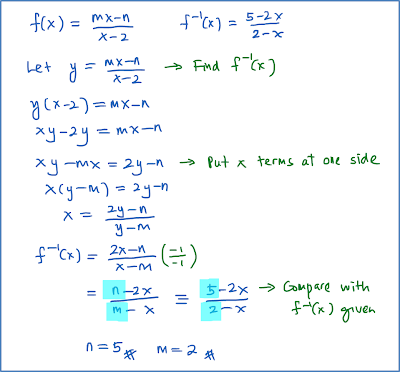2.4.2 Solving Quadratic Equations – Completing the Square
(A) The Perfect Square
(A) The Perfect Square
1. The expression x2 + 2x + 1 can be written in the form (x + 1)2, it is called a “perfect square”.
2. If the algebraic expression on the left hand side of the quadratic equation is a perfect, the roots can be easily obtained by finding the square roots.
2. If the algebraic expression on the left hand side of the quadratic equation is a perfect, the roots can be easily obtained by finding the square roots.
Example:
Solve each of the following quadratic equation
Solve each of the following quadratic equation
(a) (x + 1)2 = 25
(b) x2 − 8x + 16 = 49
Solution:
(a)
(x + 1)2 = 25
(x + 1)2 = ±√25
x = −1 ± 5
x = 5 or x = −6
(b)
x2 − 8x + 16 = 49
(x − 4)2 = 49
(x − 4) = ±√49
x = 4 ± 7
x = 11 or x = −3
(B) Solving Quadratic Equation by Completing the Square
1. To solve quadratic equation, we make the left hand side of the equation a perfect square.
2. To make any quadratic expression x2 + px into a perfect square, we add the term (p/2)2 to the expression and this will make
3. The following shows the steps to solve the equation by using completing the square method for quadratic equation ax2+ bx = – c.
(a) Rewrite the equation in the form ax2 + bx = – c.
(b) If the coefficient a ≠ 1, reduce it to 1 (by dividing).
(c) Add (p/2)2 to both sides of the equation.
(d) Write the expression on the left hand side as a perfect square.
(e) Solve the equation.
Solving Quadratic Equations
Solving Quadratic Equations
To solve a quadratic equation means to find all the roots of the quadratic equations.Example:
Find the roots of the quadratic equations
a.
b.
Answer:
(a)
(b)
Roots of Quadratic Equation – Example
General Form of Quadratic Equation
General Form of Quadratic Equation
General form of a quadratic equation is
where a, b, and c are constants and a≠0.
*Note that the highest power of an unknown of a quadratic equation is 2.
General form of a quadratic equation is
where a, b, and c are constants and a≠0.
*Note that the highest power of an unknown of a quadratic equation is 2.
Quadratic Equations (Introduction)
What is a Quadratic Equation?
- A quadratic equation is a polynomial equation of the second degree.
- A quadratic equation has only one variable
- The highest power of the variable is 2.
The followings are some examples of quadratic equations
- where a is a constant.
Example of Non Quadratic Equation
- , (Reason: The highest power of x ≠ 2.)
- , (Reason: The highest power of x ≠ 2.)
- , (Reason: The present of the term .)
SPM Practice (Long Question)
Question 5:
In diagram below, the function g maps set P to set Q and the function h maps set Q to set R.

Find
(a) in terms of x, the function
(i) which maps set Q to set P,
(ii) h(x).
(b) the value of x such that gh(x) = 8x + 1.
Solution:
(a)(i)
(a)(ii)
(b)
In diagram below, the function g maps set P to set Q and the function h maps set Q to set R.

Find
(a) in terms of x, the function
(i) which maps set Q to set P,
(ii) h(x).
(b) the value of x such that gh(x) = 8x + 1.
Solution:
(a)(i)
(a)(ii)
(b)
Inverse Function Example 7
Inverse Function Example 6 (Comparison Method)
Inverse Function Example 5
Example 5
If and . Find the value of m.








